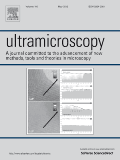
ULTRAMICROSCOPY
Scope & Guideline
Unveiling the Microscopic World with Precision and Clarity
Introduction
Aims and Scopes
- Advanced Imaging Techniques:
The journal emphasizes the development and refinement of advanced imaging techniques, including high-resolution scanning transmission electron microscopy (STEM), atomic force microscopy (AFM), and electron holography to improve the visualization of materials at the nanoscale. - Quantitative Analysis and Methodologies:
Research published in the journal often focuses on quantitative methods for analyzing materials, such as atom probe tomography (APT), electron energy-loss spectroscopy (EELS), and energy-dispersive X-ray spectroscopy (EDXS), which are crucial for understanding material properties and behaviors. - Novel Sample Preparation Techniques:
The journal includes studies on innovative sample preparation techniques that are essential for obtaining high-quality data in microscopy, including focused ion beam (FIB) milling and cryo-sample preparation. - Machine Learning and Computational Methods:
There is a growing focus on integrating machine learning and computational techniques to enhance image analysis, data processing, and interpretation, contributing to the efficiency and accuracy of microscopy studies. - Applications in Materials Science and Biology:
Research in ULTRAMICROSCOPY often explores applications of microscopy techniques in various fields, including materials science, nanotechnology, and biology, highlighting the interdisciplinary nature of the research.
Trending and Emerging
- Integration of Machine Learning:
There is a marked increase in studies applying machine learning techniques to enhance image analysis and data interpretation in microscopy, allowing for more efficient processing and improved accuracy in results. - High-Throughput and Automated Techniques:
Emerging methodologies that focus on automation and high-throughput imaging techniques are gaining popularity, enabling researchers to manage and analyze large datasets more effectively. - Cryogenic and Environmental Microscopy:
Research focusing on cryogenic and in situ microscopy techniques is trending, as it allows scientists to observe materials and biological samples under conditions that closely mimic real-world environments. - Advanced Characterization Techniques:
There is a growing emphasis on multi-modal characterization techniques that combine various microscopy methods to provide comprehensive insights into material properties and behaviors. - Nanomaterials and 2D Materials Research:
The journal is increasingly publishing studies related to the characterization and application of nanomaterials and two-dimensional materials, reflecting the current interest in their unique properties and potential applications.
Declining or Waning
- Basic Optical Microscopy Techniques:
There has been a noticeable decline in the publication of studies focused on basic optical microscopy techniques as the field moves towards more advanced electron and scanning probe methodologies that offer higher resolution and more detailed information. - Conventional Electron Microscopy Applications:
Research that relies solely on conventional electron microscopy techniques without incorporating advanced imaging or analytical methods is becoming less common, indicating a shift towards more integrative approaches. - Low-Resolution Imaging Studies:
There is a waning interest in low-resolution imaging studies as the demand for high-resolution and quantitative data increases, pushing researchers to adopt more sophisticated imaging techniques. - Traditional Sample Preparation Methods:
As new sample preparation methods are developed, traditional techniques that do not leverage advancements in technology are being published less frequently, signaling a transition to more innovative approaches. - Generalized Microscopy Studies:
Studies that do not present specific advancements or novel applications in microscopy are becoming less prevalent, as the journal increasingly prioritizes innovative research that pushes the boundaries of current methodologies.
Similar Journals

JOURNAL OF NANOPARTICLE RESEARCH
Pioneering Research at the Atomic and Molecular LevelJOURNAL OF NANOPARTICLE RESEARCH, published by SPRINGER, is a pivotal platform in the interdisciplinary field of nanotechnology, encompassing atomic and molecular physics, bioengineering, chemistry, condensed matter physics, and materials science. Operating since 1999 and converging through 2024, this journal presents cutting-edge research and innovations in nanoparticle science, aiming to bridge theoretical studies with practical applications. With a diverse scope that attracts articles ranked in various Q2 and Q3 category quartiles across its fields, including Bioengineering and Nanoscience and Nanotechnology, it ranks favorably within Scopus metrics, ensuring high visibility and impact among researchers. While the journal operates under traditional access models, it remains a critical resource for professionals and students alike, empowering them to advance their knowledge and drive future discoveries in this rapidly evolving area of study.
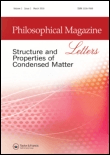
PHILOSOPHICAL MAGAZINE LETTERS
Championing Cutting-edge Research in PhysicsPHILOSOPHICAL MAGAZINE LETTERS, published by Taylor & Francis Ltd, is a prestigious open-access journal dedicated to the vibrant field of Condensed Matter Physics. With an ISSN of 0950-0839 and an E-ISSN of 1362-3036, the journal has been a pivotal platform for disseminating crucial research findings since its inception in 1981. As of 2023, it transitioned to open access, enhancing visibility and accessibility for researchers worldwide. Located in the United Kingdom, it holds a rank of #268 out of 434 in the field, placing it in the 38th percentile for its category. Its recent categorization as Q3 in Condensed Matter Physics reflects its commitment to advancing knowledge through rigorous peer-reviewed articles. The journal welcomes contributions that push the boundaries of understanding in condensed matter, fostering innovation and collaboration among physicists, professionals, and students alike. Explore groundbreaking research and join a community dedicated to the exploration of the fundamental properties of matter.
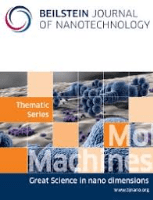
Beilstein Journal of Nanotechnology
Exploring the limitless potential of nanoscience.The Beilstein Journal of Nanotechnology is a prominent open access journal published by the Beilstein Institute that has been at the forefront of nanotechnology research since its inception in 2010. With a focus on cutting-edge developments in areas such as Electrical and Electronic Engineering, Materials Science, and Physics and Astronomy, this journal is ranked in the Q2 category across multiple scientific disciplines, reflecting its significant impact within the research community. The journal is accessible to a global audience and aims to foster innovation and application of nanotechnology across various fields. Featuring a rich convergence of interdisciplinary studies, the Beilstein Journal of Nanotechnology offers a platform for researchers to share their findings, thus advancing the frontiers of knowledge in this dynamic field. With publishers based in Frankfurt am Main, Germany, it continues to contribute to the scientific dialogue on nanoscience and its practical applications, making it an essential resource for academics, professionals, and students eager to stay at the cutting edge of technology.

Physics and Chemistry of Solid State
Fostering Interdisciplinary Dialogue for Tomorrow's ScientistsPhysics and Chemistry of Solid State is a distinguished open access journal published by Vasyl Stefanyk Precarpathian National University in Ukraine, dedicated to advancing research in the fields of condensed matter physics, materials science, and physical and theoretical chemistry. Since its inception in 2000, the journal has provided a platform for the dissemination of innovative ideas and original research findings, contributing significantly to the global scientific community. With a variety of access options, it facilitates the sharing of knowledge and collaboration among researchers worldwide. The journal has garnered recognition with respectable rankings in Scopus, positioning itself among the significant publications in its domain, particularly noted for its contributions to materials science and condensed matter physics. As it moves through its converged years from 2018 to 2024, Physics and Chemistry of Solid State aims to foster interdisciplinary dialogue and prepare the next generation of scientists to tackle complex challenges in solid-state research.

CRYSTALLOGRAPHY REPORTS
Advancing Knowledge in Crystallographic ResearchCRYSTALLOGRAPHY REPORTS (ISSN: 1063-7745, E-ISSN: 1562-689X), published by PLEIADES PUBLISHING INC, is a pivotal journal in the fields of chemistry, condensed matter physics, and materials science. Established in 1996 and continuing through to 2024, it serves as a vital resource for researchers and professionals seeking to disseminate and engage with contemporary advancements in crystallography. While currently not classified as open access, the journal's rigorous peer-review process ensures the publication of high-quality research, making it a respected entity within the academic community. With a categorization in the Q4 quartile for its respective fields and notable Scopus rankings, CRYSTALLOGRAPHY REPORTS is committed to fostering an understanding of crystallographic techniques and their application across scientific disciplines. This journal is essential for those looking to stay abreast of the latest findings and methodologies in crystallography, providing a platform for impactful discussions and collaborations.
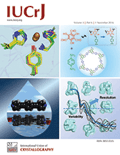
IUCrJ
Bridging Knowledge Across Scientific DisciplinesIUCrJ, published by the International Union of Crystallography, is a leading open-access journal dedicated to advancing knowledge in the fields of Biochemistry, Chemistry, Condensed Matter Physics, and Materials Science. Since its inception in 2014, IUCrJ has quickly established itself as a prestigious platform for high-quality research, achieving a remarkable record as a Q1 journal across its categories in 2023. With an increasing impact in the scientific community, evidenced by impressive Scopus rankings, IUCrJ offers unparalleled access to groundbreaking discoveries and methodologies that contribute to the understanding and application of crystallography in various disciplines. The journal’s commitment to open access ensures that research is readily available to a global audience, fostering collaboration and innovation in the scientific community. IUCrJ is an essential resource for researchers, professionals, and students aiming to stay at the forefront of crystallographic research and its interdisciplinary applications.

Materials Today Communications
Driving Innovation Through Open Access Materials CommunicationsMaterials Today Communications, published by ELSEVIER, stands as a prominent platform within the fields of Materials Chemistry, Materials Science, and Mechanics of Materials. With an open access format, this journal facilitates global dissemination of knowledge, aimed at enhancing collaboration and innovation among researchers, professionals, and students worldwide. Established in 2014 and converging through 2024, the journal has rapidly ascended through the ranks, achieving a commendable Q2 category status in multiple relevant categories. Specifically, its Scopus rankings highlight its influence, with rankings in the 64th to 69th percentile in various materials science domains. A key resource for those engaged in cutting-edge materials research, Materials Today Communications provides insightful coverage of contemporary advancements, bridging the gap between theoretical exploration and practical application.

MICROSCOPY AND MICROANALYSIS
Illuminating the Future of Microscopic ScienceMICROSCOPY AND MICROANALYSIS is a prestigious academic journal published by Oxford University Press, specializing in the interdisciplinary fields of microscopy and microanalysis. With an ISSN of 1431-9276 and an E-ISSN of 1435-8115, this journal serves as a vital platform for the dissemination of high-quality research findings, innovative methodologies, and advancements in instrumentation techniques from its inception in 1995 to its ongoing contributions projected to 2024. As a Q3 ranked journal in the category of Instrumentation, it plays a crucial role in shaping the future of microscopy by providing researchers, professionals, and students with insights into cutting-edge technologies and applications. Although it does not currently offer open access, the journal remains committed to the academic community by maintaining rigorous peer-review standards and producing scholarly articles that are essential for advancing the understanding of materials at microscopic levels. By bridging the gap between theory and practical application, MICROSCOPY AND MICROANALYSIS is an indispensable resource for those involved in these dynamic scientific fields.
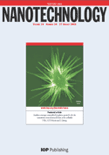
NANOTECHNOLOGY
Pioneering Research in Nanotechnology and Beyond.NANOTECHNOLOGY is a premier academic journal published by IOP Publishing Ltd, focusing on cutting-edge advancements in the interdisciplinary field of nanoscience and nanotechnology. With a strong emphasis on research that bridges biology, chemistry, engineering, and materials science, this journal presents high-quality, peer-reviewed articles that cater to the diverse interests of researchers, professionals, and students alike. NANOTECHNOLOGY boasts an impressive ISSN: 0957-4484 and E-ISSN: 1361-6528, and holds a notable position within Scopus, ranked in the second quartile (Q2) across multiple categories including Bioengineering and Mechanical Engineering, underscoring its vital role in advancing the field. The journal's impact is further highlighted by its robust rankings, making it essential reading for those looking to stay at the forefront of nanotechnology research. Commencing in 1990 and with publication extending through to 2024, NANOTECHNOLOGY provides a unique platform for disseminating significant findings and innovative methodologies while fostering collaborations across various scientific disciplines. In a rapidly evolving technological landscape, this journal not only enhances academic discourse but also contributes to the practical applications of nanotechnology in real-world scenarios.
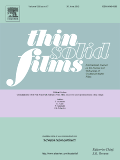
Thin Solid Films
Connecting Theory and Application in Thin Film StudiesThin Solid Films, published by ELSEVIER SCIENCE SA, is a highly regarded journal in the fields of materials science and physics, specifically focused on the properties and applications of thin films. Established in 1967, this journal has been a leading platform for disseminating research on surfaces, coatings, and advanced materials. With its consistent publication through the notable HIndex of scholarly impact, this journal showcases a diverse range of studies ranging from electronic, optical, and magnetic materials to novel surface and interface engineering. In recent evaluations, Thin Solid Films has achieved significant rankings, including a Q2 position in Materials Chemistry and Metals and Alloys, reflecting its relevance and importance in ongoing scientific discourse. Although it does not offer open access, it provides a vital resource for researchers, professionals, and students seeking to advance their knowledge and expertise in thin film technology. The journal's commitment to quality and innovation makes it an essential publication for anyone engaged in the field.